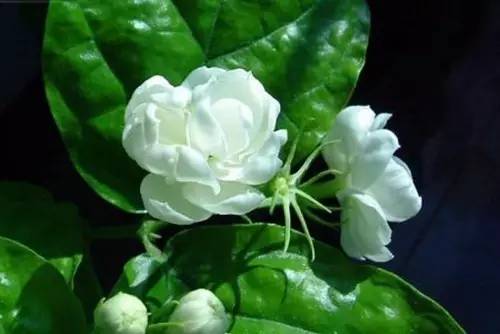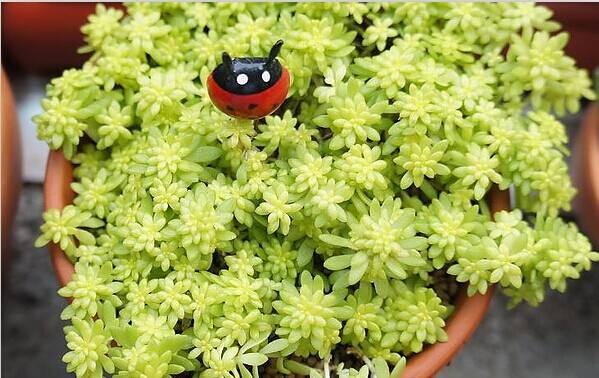Control of Diseases and insect pests in Tulip Culture
Cultivating tulips can indeed give people a pleasant feeling, but we should always pay attention to pest control and take good measures to protect it. The editor has helped you sort out the pest control of tulip farming.
1. Tulip ash rot
The pathogen of tulip gray rot is film leather, which is a fungal disease. The pathogen invaded through the base, withered above the ground, spread to the root, and then developed upwards, causing damage to the leaf stem and corm, producing many small rot spots. The infected corm rotted faster upward than downward, and the rotten corm was covered with a layer of gray mold. The diseased part can produce sclerotia. The sclerotia is black and can survive in the soil for 2-3 years.

Prevention and control methods:
The diseased plant should be removed in time by ①, and the soil around the diseased plant should be dug up or replaced.
When ② is planted, disease-free bulbs should be selected, rotation should be carried out in open field cultivation, and the soil should be well drained.
two。 Tulip blight
The pathogen of tulip blight is tulip botrytis, which is a fungal disease. The pathogen infected leaves and flowers, resulting in brown spots, leaves and stalks rotten, light gray, the whole plant dwarf, yellowish green, flowers withered. In wet weather, the diseased part is covered with a gray mildew layer, on which there are a large number of conidia, which spread between plants by means of air circulation, and produce many grayish black or dark brown sclerotia on the base of the stem and on the outer scales of the corm. The pathogen uses the sclerotia to pass through the adverse environmental conditions.
Prevention and control methods:
① should be carefully examined before planting, diseased bulbs should be removed, diseased leaves should be removed in time during the growing period, diseased flowers should be pulled out and diseased plants should be destroyed.
The substrate and soil of tulips planted by ② should be disinfected.
③ should strengthen maintenance and management and avoid excessive fertilization.
When planting ④, we should pay attention to air circulation, and when planting in open field, we should spray Bordeaux solution of 1 and 200 Bordeaux regularly to protect it.
3. Tulip broken color disease
In recent years, tulips have become popular in China and gradually entered the family. When people marvel at its beautiful flower posture, they find that it has not only solid colors, but also some inlaid varieties, which is very unique. In fact, this kind of "inlaid" tulips is not a special variety, but a disease of tulip broken color disease or tulip brocade disease.
The disease is caused by a tulip shattering virus. The color of the petals varies in depth, some deepen, some remain normal, and some become lighter or disappear, showing white or yellow. This change makes the petals appear as inlaid colors, which are called "broken colors". Some petals form light spots or stripes of different sizes, and some can produce very small red flowers. Leaves can also be damaged, there are light green or gray-white stripes, sometimes the formation of flowers and leaves, serious plant growth is poor. After the damage of tulips, the bulb growth decreased, the quality decreased, the flowering was delayed, and the broken color disease was one of the important reasons for the degeneration of tulip bulbs.
The disease occurs in all tulip producing areas, with an incidence of more than 90% in colored varieties and about 20% in some varieties. Double flowers are naturally more likely to be infected with the disease.
Broken color disease is mainly spread by aphids and juice friction, and there are few drugs that can effectively deal with the virus, so the main preventive measures are to cut off the route of transmission.
Prevention and control methods:
① kills aphids with medicament (recommended 1.2% nicotinine 1000-2000 times; 1.8% mites 6000-8000 times).
Virus-free plants or corms were selected in ② cultivation.
Diseased plants and degenerated plants were removed in time during ③ planting.
④ must kill aphids at storage sites and utensils before bulb storage to prevent transmission.
I hope these contents can help those flower lovers who like to cultivate tulips and take good care of their favorite flowers.
Time: 2019-04-19 Click:
- Prev

Why does jasmine grow leaves but not blossom?
Why does jasmine grow leaves but not blossom? The main results are as follows: (1) Jasmine flower bud differentiation and bud opening need direct sunlight, and there is no light in too shady environment, so it does not bloom. (2) too much nitrogen fertilizer and lack of phosphorus fertilizer. (3) excessive density of branches and leaves affects flower bud formation.
- Next

Identification and control of main diseases and insect pests in plum blossom
According to preliminary statistics, there are more than 170 kinds of diseases and insect pests in plum blossoms, including more than 30 kinds of diseases and 140 kinds of insect pests. Plum blossom, with dignified plant shape, vigorous dry branches, lush leaves, beautiful flowers, rich color and delicate fragrance, is one of the most popular traditional famous flowers in the Chinese people.
Related
- Fuxing push coffee new agricultural production and marketing class: lack of small-scale processing plants
- Jujube rice field leisure farm deep ploughing Yilan for five years to create a space for organic food and play
- Nongyu Farm-A trial of organic papaya for brave women with advanced technology
- Four points for attention in the prevention and control of diseases and insect pests of edible fungi
- How to add nutrient solution to Edible Fungi
- Is there any good way to control edible fungus mites?
- Open Inoculation Technology of Edible Fungi
- Is there any clever way to use fertilizer for edible fungus in winter?
- What agents are used to kill the pathogens of edible fungi in the mushroom shed?
- Rapid drying of Edible Fungi

